🤘 How to cut through the noise and stand out online
It's estimated that there are more than 50 billion indexed web pages on the internet today, making it more complex than ever to get your voice heard, despite all the technologies that are supposed to make it easy (we're looking at you, Twitter Blue). The solution? Steal the show by understanding yourself and your audience.
💬 In this week's issue:
- Magazines. Find out how an international print magazine is funded through online subscriptions.
- Strategy. Understand (in <5 mins) how to get your work discovered by leveraging the creator marketing funnel.
- Branding. Discover how to build a distinctive brand with assets that will help people remember and talk about you.
Was this email forwarded to you? Subscribe here!
Funding a print magazine with online subscriptions
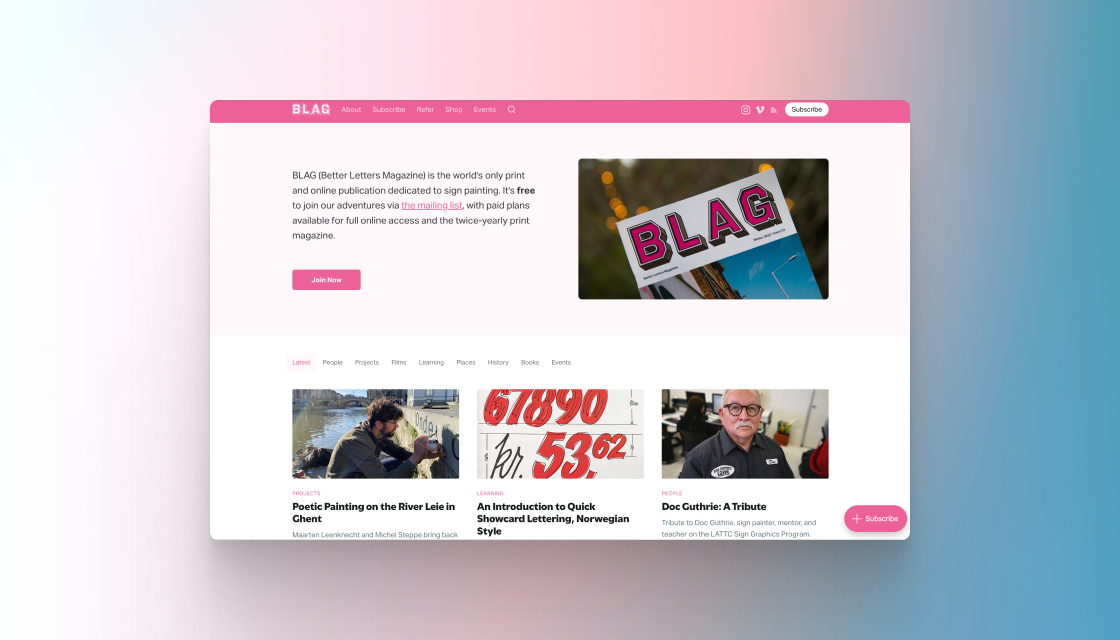
The Better Letters Magazine (BLAG) is an online publication dedicated to sign painting that leverages paid subscriptions to fund the online publication, as well as a biannual printed magazine. This unique approach of offering physical benefits to an online audience has helped the publication stand out while providing a much-needed community for a craft in resurgence.
Founder Sam Roberts shares the inspiration behind BLAG:
Since the late 1800s there had always been a print magazine for sign painters in circulation, but by the end of 2020 they had all ceased to exist. My previous work running workshops and sign painting events was badly affected by the pandemic, but as a result I rediscovered my love of researching and writing about hand-painted signs and the people that produce them. This led me towards the idea of a new international publication that would exist online and in print to inform and inspire the community — Sam Roberts
Today, Sam delivers articles and email newsletters to more than 5,000 subscribers. BLAG's biggest fans can choose to support the publication through monthly or annual paid tiers, which gets them onto the mailing list for the printed editions.

Developing a subscriber model has been a steep learning curve, in addition to figuring out the nuts and bolts of curating, editing, designing, publishing, and distributing a print magazine worldwide. However, the Ghost platform has played a pivotal role in this and now that I have the basics in place, 2023 is all about growing the subscriber base and adding more exciting benefits to subscribers, both online and in real life. — Sam Roberts
In the past 10 months alone, BLAG has attracted more than 300 paid subscribers. Two takeaways from the publication's success:
- Offering physical or in-person benefits to paid subscribers can be a fantastic way to stand out and grow your audience. Be warned though: It's not for the faint of heart — shipping physical items worldwide requires a lot of logistics, and running in-person events demands lots of your time and energy. Use these tactics mindfully!
- Having a specific niche and focusing on high-quality content pays off. The biggest growth mechanism for BLAG has been word-of-mouth recommendations because the product speaks for itself.
Interesting stories & ideas 📚
- Is there a tasteful and fun way to write content that will sell your work? Tom Critchlow argues that there is and that you should be writing riffs.
- Here are 10 subject lines that help your emails get opened more often.
- Google may hold more than 80% of the search engine market share, but there are other search engines out there. Here's how to rank in the alternative search engines.
- "Great writing isn’t born; it’s made" — find out how to turn editing into the fun part of writing.
- Guidelines about AI-generated content from Google themselves.
The creator marketing funnel explained
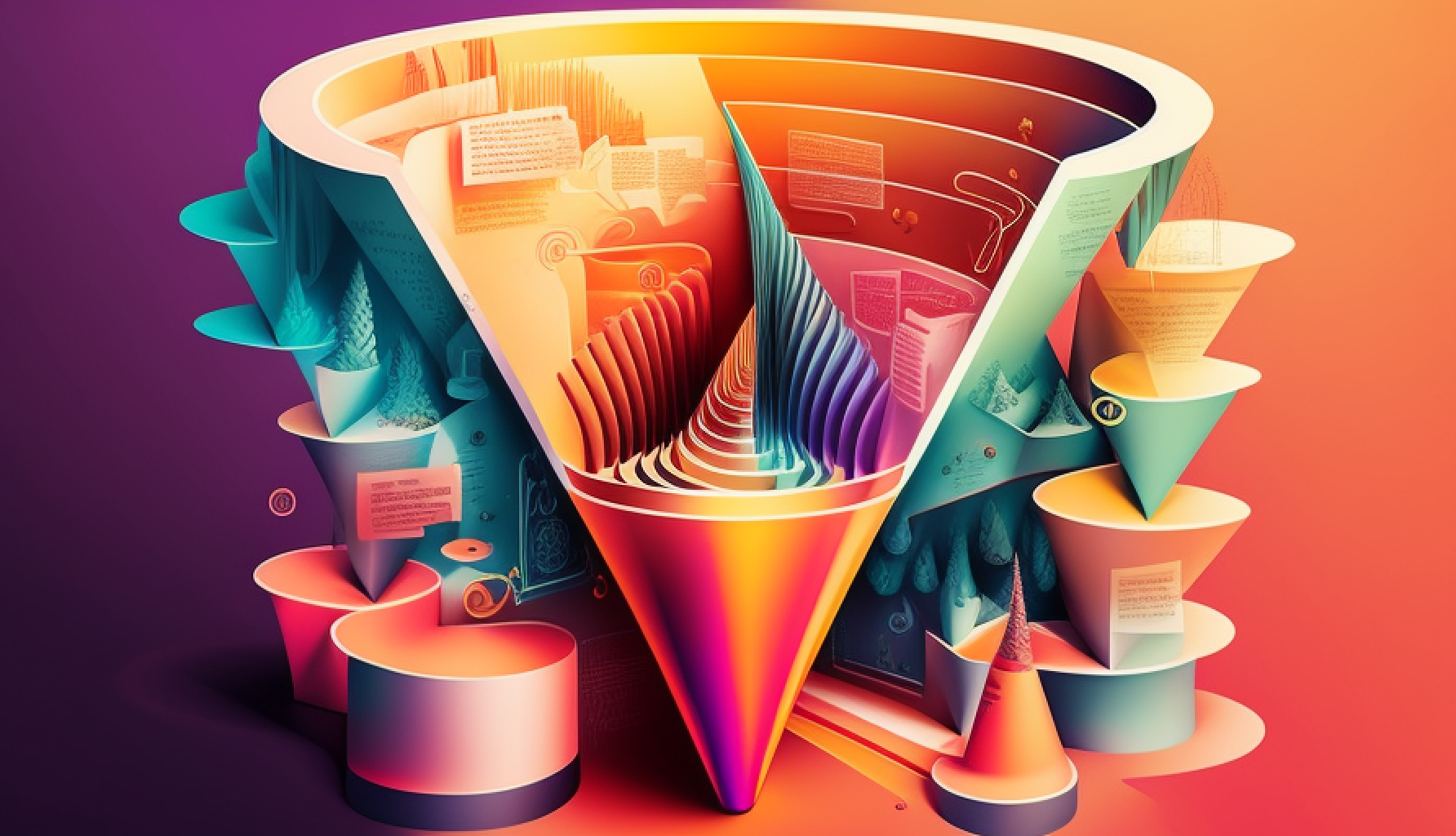
Marketing funnels are a useful model for figuring out the journey your audience takes from discovering your work to supporting what you do financially. They provide a logical framework to focus your marketing efforts and make sure you're nurturing all stages of the customer journey.
There's a lot of material out there to help understand the theory behind the marketing funnel. Still, we felt it was high time there was an explanation aimed specifically at content creation and running indie creative businesses. So, here's a recap of one of our most popular resources, with a straightforward breakdown of the marketing funnel for creators 💅
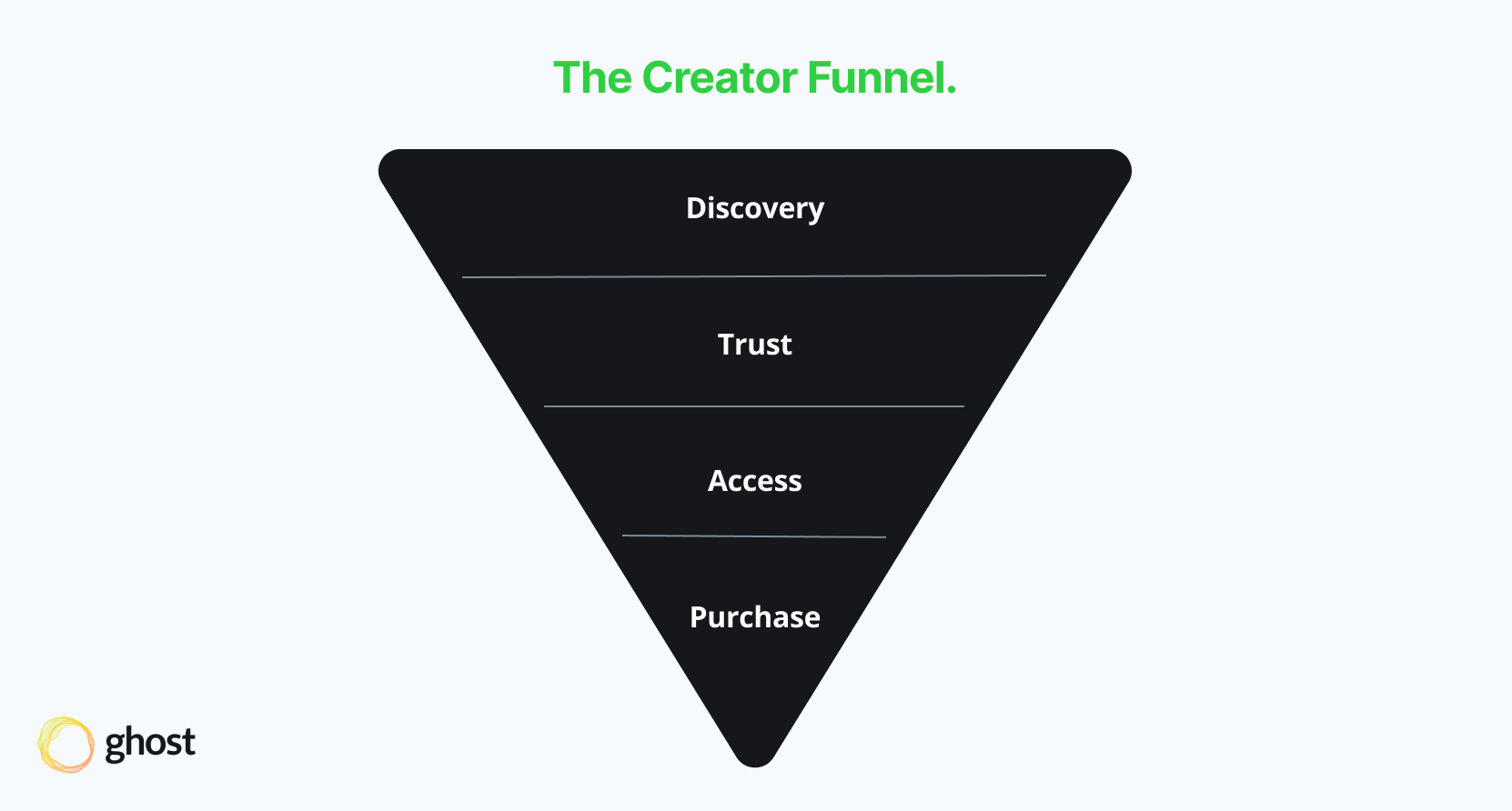
- Discovery — Get new people to know you exist by sharing free and short content in places where people already spend time.
- Trust — Build trust with people who have discovered your work by expanding on what was working in short form, and sharing longer-form content such as articles, essays, podcast episodes, and videos.
- Access — Deepen the relationship with the people who are most invested in your work by inviting them to subscribe (give you their email address) in order to access an email newsletter or content behind a free member login.
- Purchase — Ask your biggest fans to support your work financially by offering something valuable that they can't find elsewhere as a premium benefit.
Ultimately this is about finding out where your audience hangs out and building a marketing strategy that will allow you to add more people to your funnel (take a shot every time we say "funnel"), with the end goal of converting a % of that audience to paid subscribers. It's an age-old theory that any business owner can use to show up and stand out.
This is the short version, of course. Read the full resource to get the juicy details and see some real-life examples of the creator marketing funnel (🥃) in action.
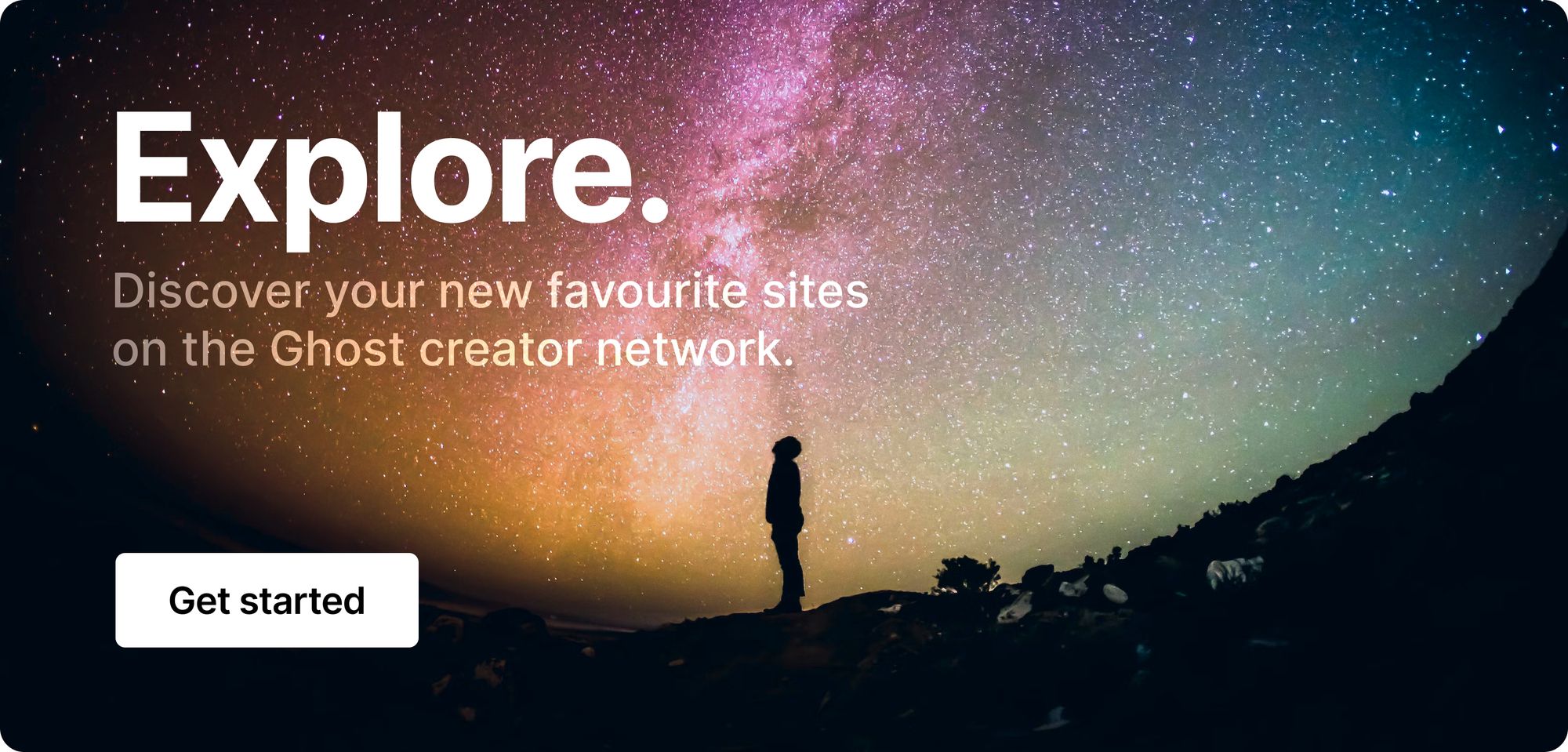
How to create a distinctive brand
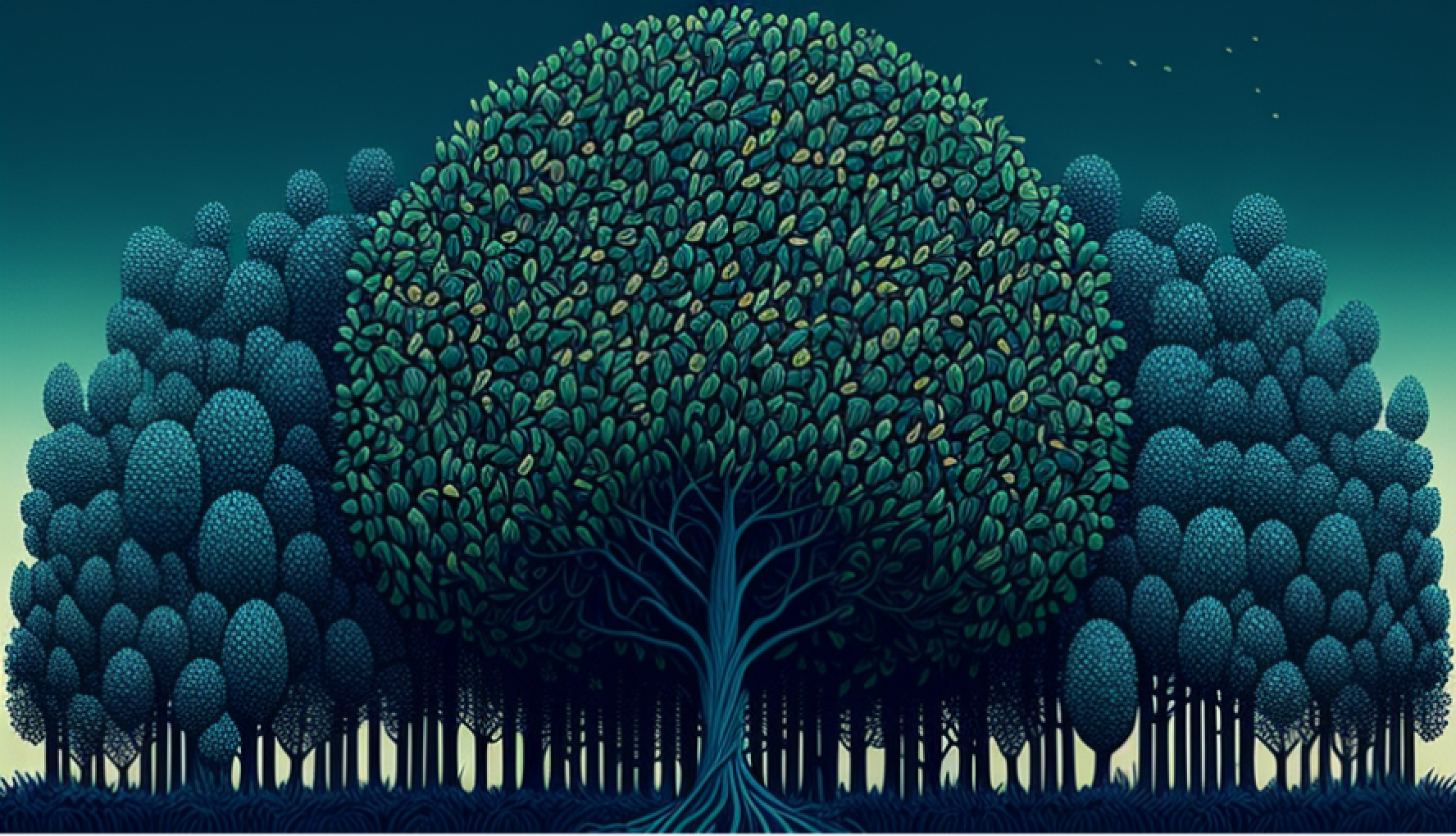
Let's face it, branding is difficult. But the time spent developing a strong brand shouldn't be underestimated when it comes to standing out in a competitive world.
The goal of developing brand assets is to make your work be noticed, remembered, and talked about (yay, word of mouth). Louis Grenier shared a thoughtful essay about distinctive brand assets on the Everyone Hates Marketers blog:
“Distinctive Brand Assets” is a term coined by Professor Jenni Romaniuk from the Ehrenberg Bass Institute of Marketing Science, used to describe a collection of visual and audio assets that are engineered to be noticed and remembered by the people you want to serve. — Louis Grenier
As Louis points out, brand assets go way beyond logos and colors. A unique slogan or writing style can be a brand asset. So can a shape, sound, symbol, or human face. Creating a distinctive brand is an opportunity (and it can be fun, too).
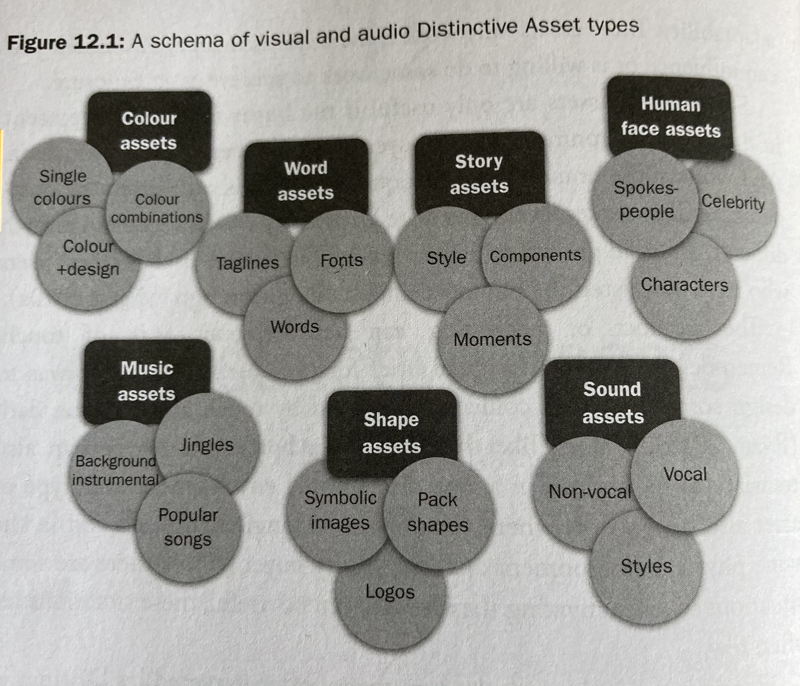
Louis argues that the key to success with Distinctive Brand Assets™ is to zero in on a small number of core assets that help you stand out, and importantly, have the conviction to stick with them.
Here's the 5-step process Louis shared to help you on your way:
- Be visible and start shipping. You can't build a brand in isolation, you need to start putting your work out there to identify what resonates.
- Ask people. Reach out to people or run a survey and ask them what they like about you/your work. Unearth what is unique about you.
- Pay attention. What do people say about you? What do they notice about your work? Are you "hot or not"? 🔥
- Find references. Look at your favorite brands and ask yourself why you like them. What stood out? Reference materials are always useful.
- Push the boundaries. Building a unique brand requires exploring the limits, and yes, this will make you feel a bit uncomfortable at first.
It’s normal to be afraid, but you won’t “find your voice” in the shadows. — Louis Grenier
FYI, Louis also runs a popular newsletter about standing out online called STFO (we can't type the non-acronym name because the email spam overlords will punish us, but you get the idea).
How will you stand out? 🧍
Curator's pick
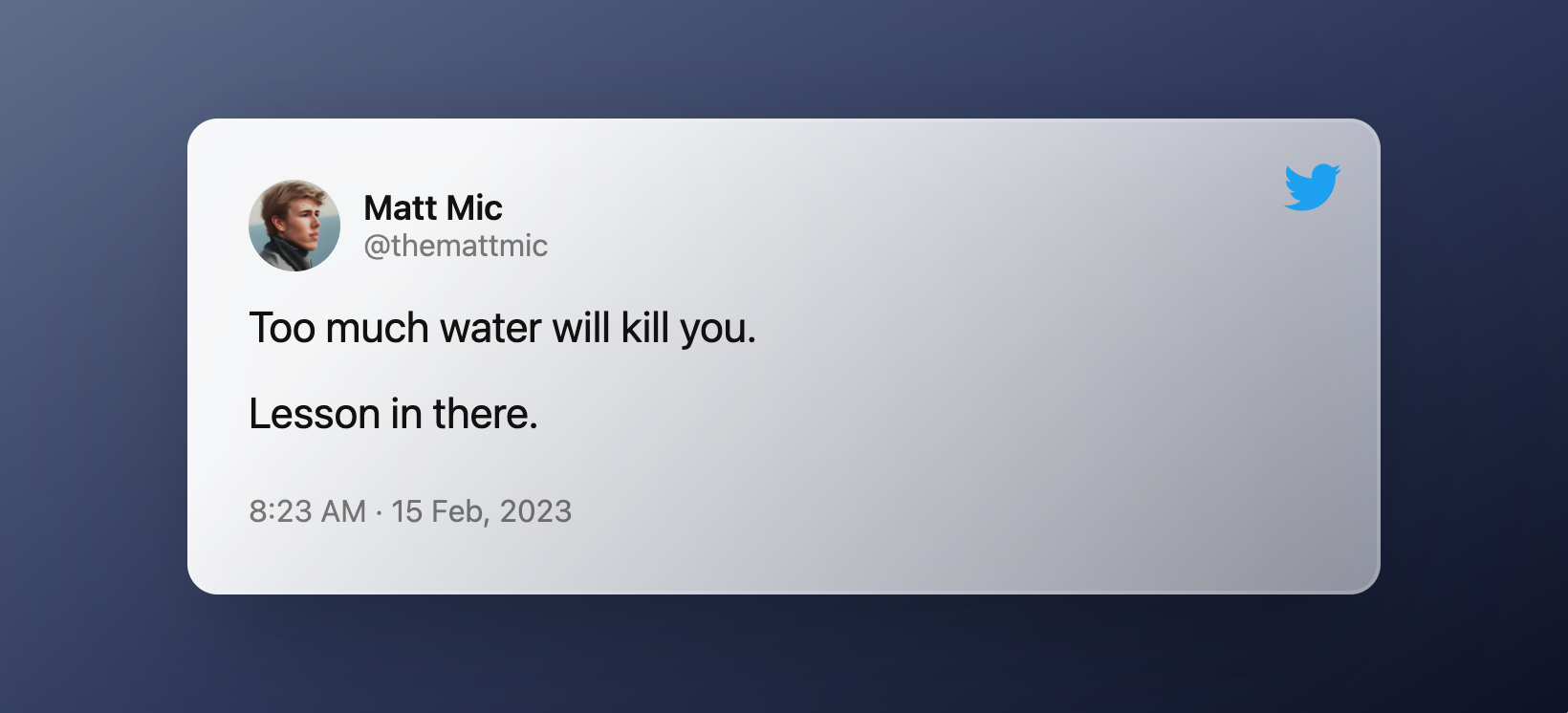
Enjoy this newsletter?
Forward to a friend, sharing is caring.
Anything else? Hit reply to send us feedback or say hello. We don't bite!
Join an invite-only community! Connect with like-minded people who create content professionally — apply here.






